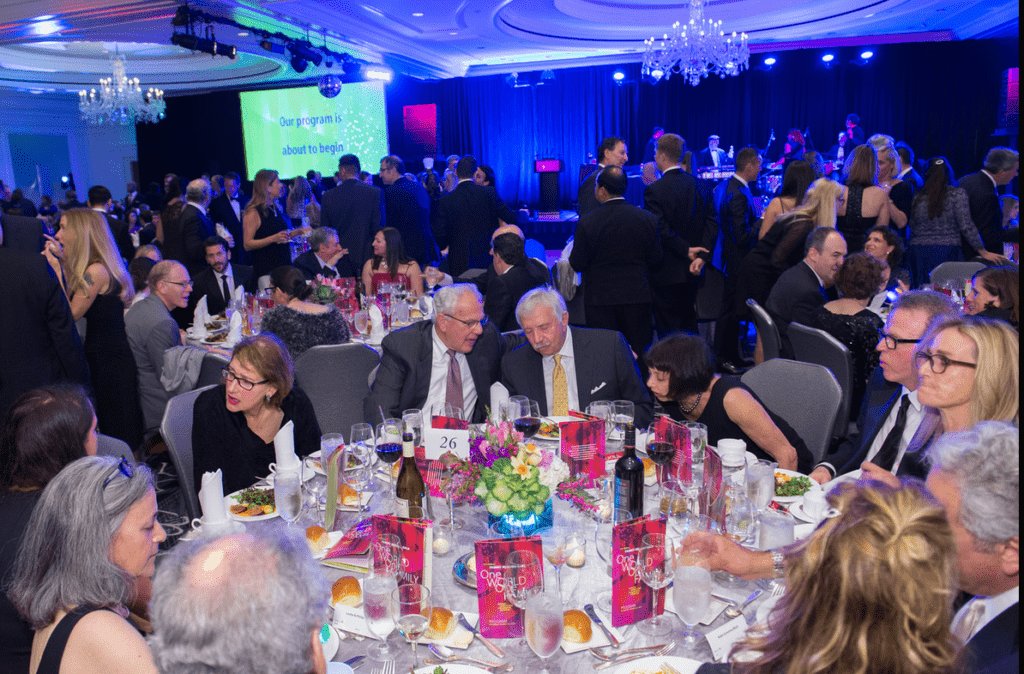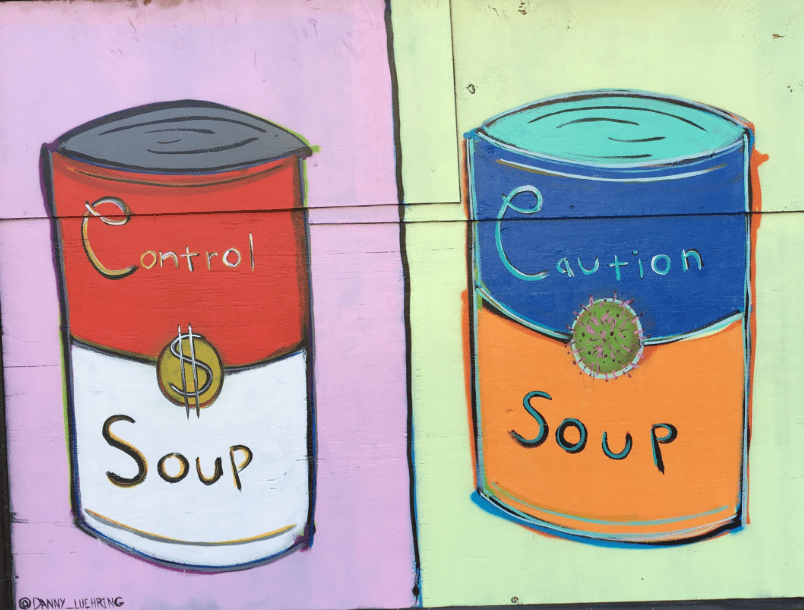 For many nonprofits, the yearly annual report is often just another task on a very long to-do list. Most charities are juggling a lot—development, program maintenance, fundraising, and more—and the annual report can feel like yet another mandatory routine project. One that often gets handled at the last minute without much intentional care and effort.
For many nonprofits, the yearly annual report is often just another task on a very long to-do list. Most charities are juggling a lot—development, program maintenance, fundraising, and more—and the annual report can feel like yet another mandatory routine project. One that often gets handled at the last minute without much intentional care and effort.
Even though annual reports are an industry standard, most nonprofits don’t realize how fruitful an effective annual report can be. An annual report that prioritizes storytelling, transparency, interactivity, and more can actually bolster donation solicitation efforts and become a lucrative fundraising tool.
Before we jump into the nitty gritty of strategic annual reporting, let’s cover the basics.
What is an annual report?
Think of an annual report as a “year in review”—like a yearbook of sorts, but for donors, supporters, and partners to look at the highlights of any given year at your organization. Of course, a lot can happen in a year (nonprofits know that best), but with an annual report, you can summarize all the year’s milestones including your impact, accomplishments, new developments, and more.
Annual reports can be created and presented in a variety of ways—both digitally and in print. Depending on the needs, audience, or even constraints of the individual nonprofit, you might choose to create a printed booklet or pamphlet (which could then be mailed to supporters and donors or handed out at events). Or, in line with more frequent developments in the space, you could turn to digital software tools to create an annual report that intrigues readers with more vibrant visual elements like photos, videos, and clickable links.
What does an annual report include?
Every nonprofit’s annual report is different, depending on its mission, values, impact, audience, and more. However, most organizations include a few standard elements:
- Stated mission and values
- Accurate financial data
- Examples of impact
- Major accomplishments
- Program and initiative assessments
- Event highlights and recaps
- Donor and board member lists
- Contact information
Though every nonprofit is required to submit a Form 990, most organizations take their reporting a step further and create a yearly review that includes more audience-centric material (like the topics listed above).
Now that we’ve covered the basics, let’s dig into the best part of annual reporting—the ability to create the ultimate fundraising tool.
5 Ways Effective Annual Reporting Drives Donations



 Once upon a time I let folks know I’d “finagled” a discount for them. After one reader told me the word “finagle” means “to obtain something by devious or dishonest means,” I sent an apologetic “Ruh Roh” email. I received a lot of forgiving (thank you!) feedback. Many kindly supported my initial use of the word “finagle.”
Once upon a time I let folks know I’d “finagled” a discount for them. After one reader told me the word “finagle” means “to obtain something by devious or dishonest means,” I sent an apologetic “Ruh Roh” email. I received a lot of forgiving (thank you!) feedback. Many kindly supported my initial use of the word “finagle.”

 Giving is an emotional experience. It deserves an emotional response.
Giving is an emotional experience. It deserves an emotional response.



 I find a widespread misunderstanding about the notion of what constitutes being donor-centered. It derives from two misconceptions:
I find a widespread misunderstanding about the notion of what constitutes being donor-centered. It derives from two misconceptions:
 Ever have a well-meaning, yet perhaps overly controlling or risk-aversive, boss say to you:
Ever have a well-meaning, yet perhaps overly controlling or risk-aversive, boss say to you:





 When organizations aren’t raising as much money as they need, they’ll often tell me: “We need to recruit new board members.” This is very often true, but it’s only a piece of the puzzle as to why they’re not being more successful with fundraising.
When organizations aren’t raising as much money as they need, they’ll often tell me: “We need to recruit new board members.” This is very often true, but it’s only a piece of the puzzle as to why they’re not being more successful with fundraising.


 Trust defines the credibility and legitimacy not only of your organization, but of the entire social benefit sector. Yet too few organizations make the effort to operationalize this construct into their fundraising and marketing planning.
Trust defines the credibility and legitimacy not only of your organization, but of the entire social benefit sector. Yet too few organizations make the effort to operationalize this construct into their fundraising and marketing planning.


 What if I told you there’s a teensy little digital upsell that could skyrocket your year-end fundraising results? Would that be of interest?
What if I told you there’s a teensy little digital upsell that could skyrocket your year-end fundraising results? Would that be of interest?

 This Thursday folks in the United States will celebrate what I consider to be the social benefit sector holiday of the year.
This Thursday folks in the United States will celebrate what I consider to be the social benefit sector holiday of the year.
 This year Giving Tuesday is November 28th. So, soon.
This year Giving Tuesday is November 28th. So, soon.








 From time to time, I host guest posts from professionals with niche expertise. There are just some things others know a lot more about than do I, especially when it comes to technology. Today’s article is one of those, from someone who really understands the ins and outs of text messaging and fundraising. Here’s what he has to say.
From time to time, I host guest posts from professionals with niche expertise. There are just some things others know a lot more about than do I, especially when it comes to technology. Today’s article is one of those, from someone who really understands the ins and outs of text messaging and fundraising. Here’s what he has to say. I’m a huge Seth Godin fan, always in awe of the plethora of wisdom he manages to pack into one pithy post. I save them up, building a collection I can draw upon for inspiration as life, personal and professional, pushes in.
I’m a huge Seth Godin fan, always in awe of the plethora of wisdom he manages to pack into one pithy post. I save them up, building a collection I can draw upon for inspiration as life, personal and professional, pushes in.
 You are if your modus operandi is fire fighter.
You are if your modus operandi is fire fighter.


 If you’ve never read management and marketing guru
If you’ve never read management and marketing guru 
 Have you been struggling with whether – and how – to incorporate generative artificial intelligence (AI; ChatGPT) into your work? Or perhaps you’ve been worrying your job will soon be obsolete?
Have you been struggling with whether – and how – to incorporate generative artificial intelligence (AI; ChatGPT) into your work? Or perhaps you’ve been worrying your job will soon be obsolete?


 Early in my career I received a piece of fundraising advice that has stuck with me to this day:
Early in my career I received a piece of fundraising advice that has stuck with me to this day:

 Have you ever received confoundingly terrible customer service? Maybe at a restaurant, hotel, fast food restaurant or retail outlet? It happens all the time and, likely, you’ve thought to yourself: “Why on earth are they treating me like this? It’s so stupid! Don’t they realize I’ll never come here again?”
Have you ever received confoundingly terrible customer service? Maybe at a restaurant, hotel, fast food restaurant or retail outlet? It happens all the time and, likely, you’ve thought to yourself: “Why on earth are they treating me like this? It’s so stupid! Don’t they realize I’ll never come here again?”
 Today a friend, who serves on the board of a struggling local arts organization, asked me what they can do to increase their fundraising. I asked her a few questions; then answered simply: “Have more conversations with people; make more friends.”
Today a friend, who serves on the board of a struggling local arts organization, asked me what they can do to increase their fundraising. I asked her a few questions; then answered simply: “Have more conversations with people; make more friends.”
 Did you ever wonder if there is a foolproof way to communicate with donors?
Did you ever wonder if there is a foolproof way to communicate with donors? Annual reports don’t have to be dry as dust. In fact, the most effective ones are not financial reports; they’re a story with the donor at the center. And they inspire action.
Annual reports don’t have to be dry as dust. In fact, the most effective ones are not financial reports; they’re a story with the donor at the center. And they inspire action.
 For many nonprofits, the yearly annual report is often just another task on a very long to-do list. Most charities are juggling a lot—development, program maintenance, fundraising, and more—and the annual report can feel like yet another mandatory routine project. One that often gets handled at the last minute without much intentional care and effort.
For many nonprofits, the yearly annual report is often just another task on a very long to-do list. Most charities are juggling a lot—development, program maintenance, fundraising, and more—and the annual report can feel like yet another mandatory routine project. One that often gets handled at the last minute without much intentional care and effort.


 In 2018, WSJ columnist Christopher Mims observed:
In 2018, WSJ columnist Christopher Mims observed:

 Have you started working on your annual appeal and year-end fundraising plan?
Have you started working on your annual appeal and year-end fundraising plan?